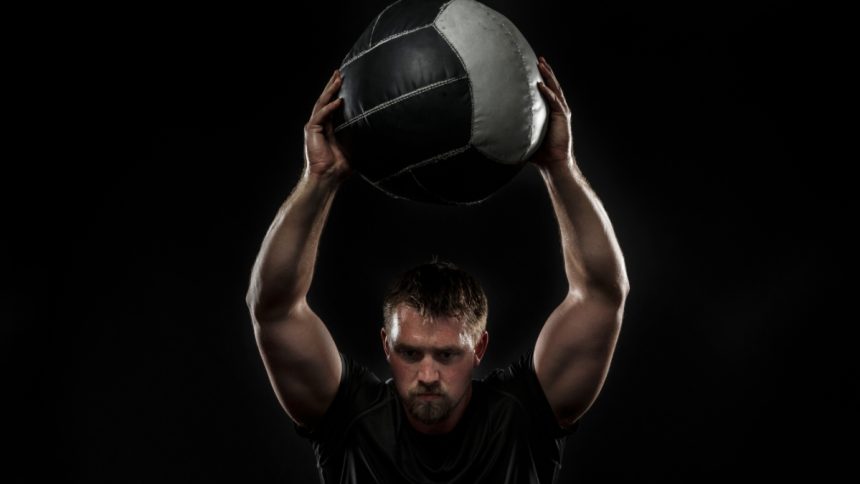That nagging knee pain from last week’s basketball game isn’t going away. Your shoulder aches after every tennis session. You’re wondering if you need special care or if your regular doctor can help. The choice between sports medicine and primary care can feel confusing when you’re hurting and want to get back to your favorite activities.
Joint pain affects millions of active adults. In the United States alone, approximately 8.6 million sports-related injuries are reported each year. The question isn’t whether you need help. It’s who can give you the best care for your specific situation.
Your Primary Care Doctor: The First Line of Defense
Your family doctor or primary care physician handles most health needs, including many sports-related aches and pains. They know your medical history and can treat common injuries like minor sprains, basic muscle strains, and general joint discomfort.
Primary care works well for simple problems that respond to rest, ice, basic pain relief, and time. Your doctor can prescribe anti-inflammatory medications, suggest physical therapy, and monitor your healing progress. They also handle sports physicals and can give advice about staying active safely.
Most importantly, your primary care doctor knows when you need more specialized help. They work as your healthcare quarterback, deciding when to send you to specialists who focus on specific body systems or injury types.
When Sports Medicine Makes Sense
Sports medicine doctors receive extra training beyond their basic medical education. They understand how athletic movements create injuries and focus on getting active people back to their sports safely.
Choose sports medicine when your injury happened during athletic activity or exercise. These doctors excel at treating the full range of movement-related problems, from weekend warrior injuries to serious athletic trauma.
Broadly speaking, injuries shouldn’t last longer than a week or two without completely healing or showing signs of improvement on their own—especially for people roughly college-aged and younger. If pain lingers, is not getting better within a week or two weeks at the longest, regardless if there was an injury, one should be evaluated by a professional.
Sports medicine doctors also help prevent future injuries by analyzing your movement patterns and suggesting training changes. They understand the demands of different sports and can create return-to-play plans that reduce your risk of getting hurt again.
Orthopedic Specialists: When Surgery Might Be Needed
Orthopedic doctors are surgeons who fix bones, joints, muscles, and ligaments. An orthopedic surgeon will often see patients referred by colleagues in the sports medicine specialties for more serious injuries that may require surgical intervention.
You need orthopedic care for severe injuries like fractures, complete ligament tears, or joint problems that don’t respond to non-surgical treatment. These doctors can perform procedures from simple arthroscopic repairs to complex joint replacements.
Many orthopedic specialists also have sports medicine training. This combination gives them deep knowledge of both non-surgical and surgical approaches to athletic injuries.
The Imaging Decision Tree
Advanced imaging helps doctors see inside your body to understand injury severity. Magnetic resonance imaging (MRI) was the most utilized modality (67%), followed by radiography (12%), ultrasonography (9%), and computed tomography (4%) in professional sports settings.
X-rays show bone fractures and joint alignment issues. MRI scans reveal soft tissue problems like ligament tears, cartilage damage, and muscle injuries that X-rays miss. Ultrasound can quickly check muscle and tendon problems right in the office.
Your doctor will decide if you need imaging based on your symptoms, physical exam findings, and how long you’ve been having problems. Not every sports injury requires expensive scans.
Making the Right Choice for Your Situation
Start with these questions to guide your decision:
How did the injury happen? Sports-related injuries often benefit from sports medicine expertise. These doctors understand the specific stresses different activities place on your body.
How severe is the pain? Mild discomfort that improves with rest might be fine for primary care. Severe pain, inability to bear weight, or obvious deformity needs immediate specialized attention.
How long have you had symptoms? New injuries can often wait a few days to see if they improve. Problems lasting more than two weeks without improvement need professional evaluation.
What are your activity goals? If you want to return to competitive sports or intense training, sports medicine doctors better understand these demands. For general fitness activities, primary care may be sufficient.
Treatment Paths: Non-Surgical vs Surgical
Most sports injuries heal without surgery. Most sports injuries do not require surgery. Sports medicine doctors focus heavily on non-surgical treatments like physical therapy, injections, and activity modification.
Primary care doctors can handle basic treatment approaches but may refer you to specialists for advanced non-surgical options like platelet-rich plasma injections or specialized rehabilitation programs.
When conservative treatment fails or you have a severe injury, surgical referral becomes necessary. The good news is that modern techniques are often minimally invasive with faster recovery times than traditional surgery.
Walk-in Clinics and Urgent Care Options
For new injuries that need quick attention, walk-in clinics and urgent care centers provide immediate evaluation. These facilities can rule out fractures, provide initial pain relief, and give referrals to appropriate specialists.
Use urgent care for injuries that need attention but aren’t true emergencies. They bridge the gap between your regular doctor’s schedule and emergency room visits for serious trauma.
The Bottom Line
Your injury type, severity, and personal goals should drive your healthcare choice. Primary care doctors handle most common sports-related problems effectively and know when to refer you elsewhere. Sports medicine specialists excel at athletic injuries and understand the unique needs of active people. Orthopedic surgeons provide surgical solutions when other treatments fail.
Don’t let uncertainty keep you on the sidelines. Start with your primary care doctor if you’re unsure, as they can always refer you to specialized orthopedic care when needed. The key is getting professional evaluation for any injury that doesn’t improve quickly or interferes with your daily activities.
Remember that the best treatment plan combines the right specialist with the right timing. Early intervention often prevents minor problems from becoming major ones, keeping you active and healthy for years to come.
Lynn Martelli is an editor at Readability. She received her MFA in Creative Writing from Antioch University and has worked as an editor for over 10 years. Lynn has edited a wide variety of books, including fiction, non-fiction, memoirs, and more. In her free time, Lynn enjoys reading, writing, and spending time with her family and friends.















